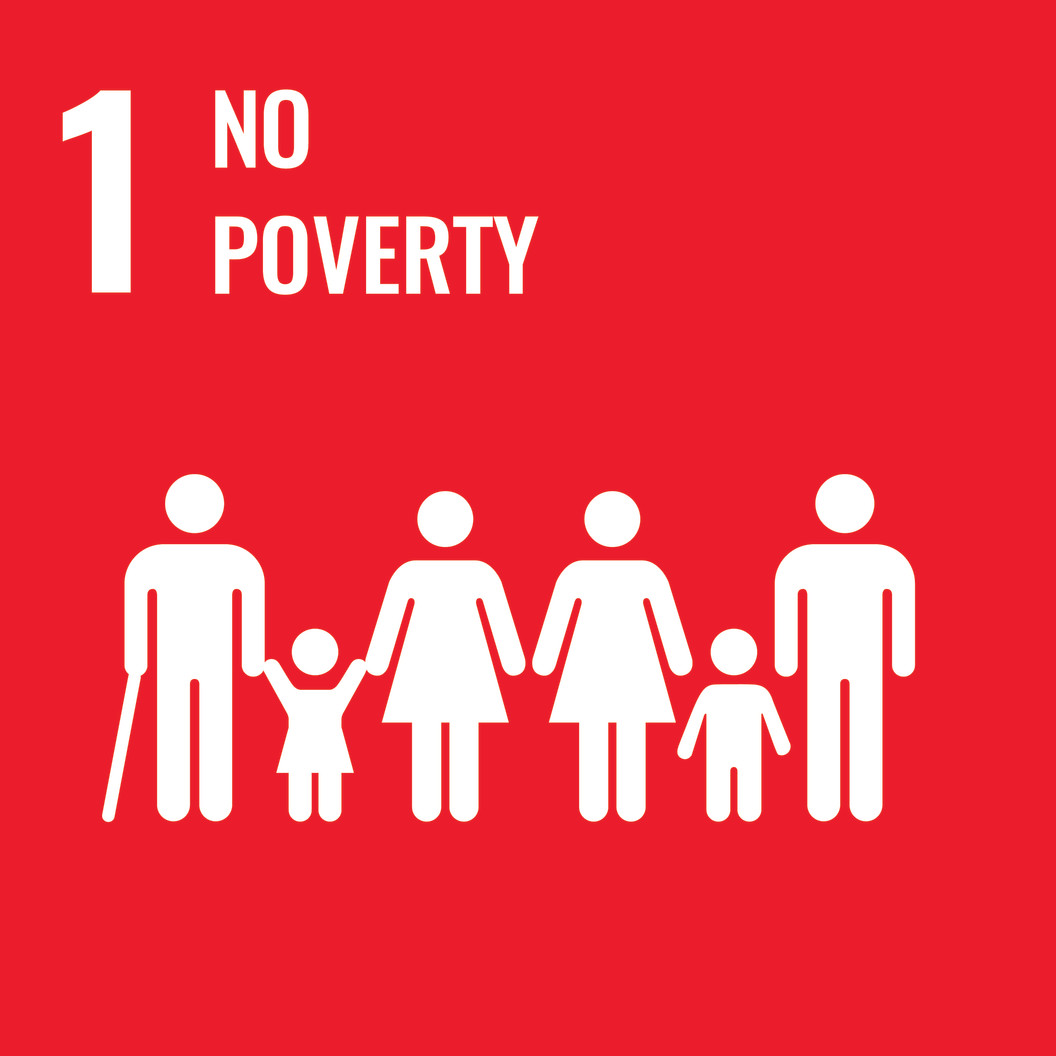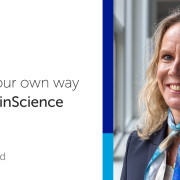- Science News
- Frontiers news
- Camilla Røstvik – Breaking the silence: Artistic revolutions against taboos and period poverty
Camilla Røstvik – Breaking the silence: Artistic revolutions against taboos and period poverty
Author: Niamh Bothwell
Dr Camilla Røstvik is an associate professor of history at the University of Agder in Norway, an honorary lecturer in the School of Medicine and the School of Art History at Aberdeen, and an honorary research fellow in art history at the University of St Andrews. She is also principal investigator (PI) on the Wellcome Trust-funded Menstruation Research Network and co-PI on the Royal Society of Edinburgh-funded Ending Period Poverty project.
In alignment with United Nations Sustainable Development Goal 1, which aims to eradicate all poverty everywhere, we explore Camilla’s efforts to raise awareness about menstruation in art history, highlighting the necessary evolution required to effectively combat period poverty.

Photo credit: Jo Hanley
To paint the scene for readers, can you tell us more about your work and how it all started?
“I’m an art historian and I work on the visual cultures of menstruation, which includes everything from products and advertising to art and medicine. I’ve always been curious about menstruation, but I was not satisfied with the information I got when I was younger. It was all very traditionally scientific; there was no pleasant mystery or joy in it. It was just focused on pain and fertility, and I wasn’t that interested in fertility. I was interested in academia, studying women in science, getting into feminist material, and doing a PhD on the women who worked at CERN.
“When I had the opportunity to write my own research project, I came back to the idea of menstruation. I wondered if anyone had ever written about menstruation and visual culture. So, it was driven by my own interest, but it intersected with a moment when more people were interested in the subject. I could also see it flare up in menstrual art, discussions about period poverty, and the tampon tax. The reason I think it’s important to work on menstrual visual culture is because menstruation happens to so many people, menstrual blood is very common, yet it’s quite difficult to handle. We shouldn’t jump through many hoops and habits to keep it invisible, but we do. I was also curious about what the symbols, codes, and objects stand in for this very normal, but very invisible, yet hyper-visible subject.”
Was there a particular source of inspiration, whether it be a specific artwork or an individual, that ignited your passion for delving into this subject?
“I was inspired early on, not through academic channels, but social media. I was eventually recommended a book by Chris Bobel, who is also a menstrual sociologist, thinker, and historian. I never thought that this could be an academic subject but of course it can, and she wrote in such an engaging and academic way that I felt inspired professionally. The other thing that inspired me were podcasts that I listened to, one in particular called The Crimson Wave, which was one of the first podcasts on the subject of menstruation about 10-15 years ago. That empowered me to realize that you can talk about this stuff.”
In 2020, Scotland was the first country to pass the landmark bill to guarantee free access to menstruation products and help tackle period poverty, which is in line with many of the UN Sustainable Development Goals, including the Sustainable Development Goal 1, no poverty. Since then, you have led and been part of many projects, including Ending Period Poverty. Would you be able to give us more insight into this and what challenges you and your team faced during this research project?
“This was an edited special collection of the Open Library of Humanities which we did on menstruation. It was driven by a grant from the Royal Society of Edinburgh, where we brought together historians to answer questions about why this is happening in Scotland, why now, and why menstruation. In the end, eight articles were produced in which these questions were answered from varying perspectives. My two collaborators and I wrote a piece about the role of art and feminism in Scotland. Other contributors focused on Scotland’s unique women in the fields of science, medicine, history, and psychiatry. We also provided a white paper suggesting why this decision was made and what would have to happen to make this possible elsewhere.
“One example we looked at was Kenya, as they were one of the first countries with universal access to menstruation products and laws around it, but they only apply to schools. Scotland got much more attention, likely because of the country itself and it being part the Global North. However, if you look at Kenya and the key ingredients for why it happened, there are some similarities between the nations including the role of women in politics, having a growing younger population (including those who menstruate), and poverty in both countries.
“The challenge was we were a group of historians writing something happening in the present moment, which was unusual and interesting, but we made no predictions. We tried to write it in such a way that it would give readers a glimpse of what was happening in real time and serve a historical document because we hadn’t yet had the Scottish government doing tests as to how this bill would work. Soon we’ll have more information on the subject.”
Regarding your work, how do you think art has helped to drive the conversation around menstruation, particularly around period poverty?
“Art has always played a crucial role, but never on such a big scale. There have been menstrual artists working around the world since the 1960s, but they never got a lot of coverage. Menstrual art does do something for people, which is very different from all other parts of menstrual culture.
“In the 2000s, social media changed the art world – artists no longer needed a gallery, an exhibitor, or even a curator. They could immediately post their work and that was a revolution, and we see that to do with everything that was censored in the early days. For example, platforms like Instagram were slow to censor, and artists like Rupi Kaur were able to publish a series of self-portraits with menstrual clothes that were beautifully stained but were then taken down by the social media sites. Since she was already famous at the time for her poetry, this sparked a public conversation about censorship and advertising.
“The public nature of the debates that happened between censorship bodies, corporations, and artists made it so people could follow along and really helped raise awareness. Over the past decade, numerous artists have highlighted unique menstrual experiences from the environmental angle to trans experiences to pain and endometriosis. With the topic being so vast and universal, it is not just about period poverty. Individuals from various socioeconomic backgrounds are interested, while some artists maintain a specific focus on period poverty. It’s as if they were able to visualize or pinpoint the taboo much quicker than an academic paper.”
I see you’re currently writing a new book called The Painters Are in: A Visual History of Menstruation, what is it about? Do you have any other projects also in the works?
“Yes, I am and, as it says, it is the visual history of menstruation. My first book, originally in my project about visual culture and menstruation included the corporate stuff and advertising products in art, but I split it in two because I think there’s so much to say about both. This next one is an art history of menstruation, and I’ve structured it as a rainbow, a little bit inspired by a book called Prismatic Ecology. For example, the green chapter is about environmental art and menstruation. The blue chapter is about the blue liquid [often used in period commercials], the orange chapter is about the portrait of Donald Trump that went viral a few years ago. I’m doing each chapter as a case study and a lot of it is quite contemporary to focus on exactly what we’ve been talking about and how important these last 10 years have been.
“I’m also working on other projects too, as well as working with a lot of students and archives, including The Smithsonian, which has just acquired a large menstrual collection.”
Looking at the future, tackling both the taboo around menstruation and period poverty, what do you think needs to change to overcome these hurdles and what can others do to help?
“It’s difficult. However, documenting history does help to talk about the visual culture around this topic. I find it interesting how some of my collaborators have organized workshops with different groups, such as school children or adults, including both people who menstruate and people who don’t, to look at advertising together. This is a really nice way of approaching the topic free-from-shame, looking to visualize it. Therefore, I believe that’s how educators might be able to use this work.
“We also need to keep listening to the activists because the field is becoming very crowded with policymakers and corporations. If you’re unsure of what’s left to do in the menstrual space, listen to activists here; look to a charity such as Bloody Good Period, they’ll give you a very clear direction on how to show support and get involved. I understand activists are still very concerned about data and menstrual information sharing, especially in the US and places with restrictive abortion rules. They’re also concerned about education. So, there are areas that have big question marks, and we can listen to activists as to the best way to support and overcome these challenges.”
Lastly, if you could talk to your younger self, what advice would you give that you believe would be helpful when it comes to entering academia and how women can get into a career like yourself?
“I tried to fit into a mold of what an academic was because it was quite a male-dominated field and so I dressed a certain way, spoke a certain way, and did research a specific way. Even so, I dipped my toes into feminism which, looking back, worked because I secured a job. Maybe you have to play the game and then you can loosen some of those tropes, but I also think I had more choice and power than I thought. We think that a graduate student is the lowest level of academia, but to be a graduate student is a privileged position, and we can use that power to benefit those who didn’t have the opportunity to enter academia. That’s an important question, thinking about the power we do have and what changes we want to make.
“I also wish I was at an earlier age when I had started to build my own community, such as a feminist reading group. Occasionally, I would find someone who was interested in the same things as me and that’s precious; you’ve got to nurture those relationships because they’re rare. If you bring other people with you and you help each other, then the likelihood of you all succeeding and making a difference is higher. Academia tells you that it’s all about the brilliant lone star, you do it alone and you’re so smart, but when I look back, it’s all due to other people within the community.”


Frontiers is a signatory of the United Nations Publishers COMPACT. This interview has been published in support of United Nations Sustainable Development Goal 1: End poverty in all its forms everywhere and United Nations Sustainable Goal 5: Achieve gender equality and empower all women and girls.







